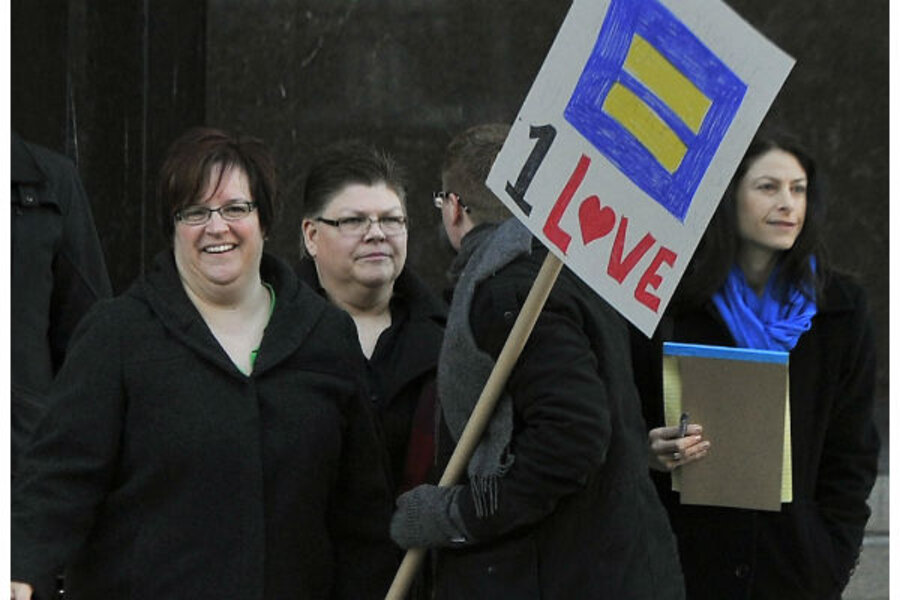More religious Americans support gay marriage than a decade ago, survey finds
Loading...
Public support for gay marriage may have reached a tipping point, even among religious Americans, who have been traditionally opposed to the idea.
Ten years ago, roughly one-third of Americans supported gay marriage, according to the Pew Research Center’s 2003 survey on homosexuality. Today, 53 percent of Americans say they believe gay and lesbian couples should be allowed to marry, according to a new survey conducted by the Public Religion Research Institute in Washington.
The latest poll illustrates “a fairly remarkable shift” in attitudes, PRRI chief executive Robert Jones said during a conference call with Reuters. “As public opinion goes, we really rarely see this kind of movement on any issue over a decade’s time.”
While more than half of Americans currently favor a universal right to marry, the data show that levels of support vary drastically by region, state, generation, and education level. That probably does not come as a surprise to those following the embittered battles surrounding gay marriage in Utah, Virginia, and Michigan, among other states. But what is surprising is that religion seems to play a much smaller role than it did a decade ago in how individuals decide where they stand on gay marriage.
Ten years ago, whether or not an individual subscribed to a major religion was a relatively good indicator of their stance on gay marriage: Believers resoundingly rejected the idea that the right to marry should be extended to gay and lesbian couples, while an overwhelming majority of religiously unaffiliated Americans supported a universal right, the PRRI report states. Over the past 10 years, support has grown among practitioners of every religion included in the both the 2003 Pew survey and the 2013 PRRI report.
Here are details about religious Americans' views as presented in the PRRI report, which made comparisons with views from a decade ago by drawing on the 2003 Pew survey:
- The greatest level of support in the new report came from Jewish Americans, 83 percent of whom favor marriage equality – even more than secular Americans who do not identify with any particular faith.
- A slight majority (57 percent) of white and Hispanic Catholics now favor same-sex marriage, up from roughly one-third 10 years ago.
- Support among white mainline Protestants nearly doubled, from 36 percent in 2003 to 62 percent in 2013.
- Although acceptance has increased among black and white evangelical Protestants, the majority of each group opposes a universal right to marry.
Not only are more congregants breaking away from their religion’s sanctioned position on gay marriage, but some are actually leaving because of it. The researchers found that nearly one-third of Millennials who left their childhood faith reported that negative views on homosexuality fueled their desire to leave.
While the gap between the religious and nonreligious has narrowed drastically, new divisions have become more pronounced. The gay-marriage rift between Republicans and Democrats, for instance, has intensified over the years as more Democrats than Republicans have come around to the idea.
The generational divide also remains quite pronounced, especially between Republican Millennials and members of older generations.
“It is difficult to overstate the effect age has on support for same-sex marriage,” the report states. “Even among groups that strongly oppose same-sex marriage, there are significant generational gaps.”
Among other findings in the new report:
- While the majority of women (57 percent) favor same-sex marriage, slightly less than half of men (48 percent) support it.
- Support seems to vary depending on the respondent’s level of educational attainment. Less than half of the individuals with a high school diploma or lower level of education support gay marriage. That number increases to 57 percent with some college, 60 percent for college graduates, and 66 percent for those with postgraduate educations.
- Support also appears to correspond with geographical location: 48 percent among Southerners, 51 percent among Midwesterners, 58 percent among those in the West, and 60 percent among those in the Northeast.








